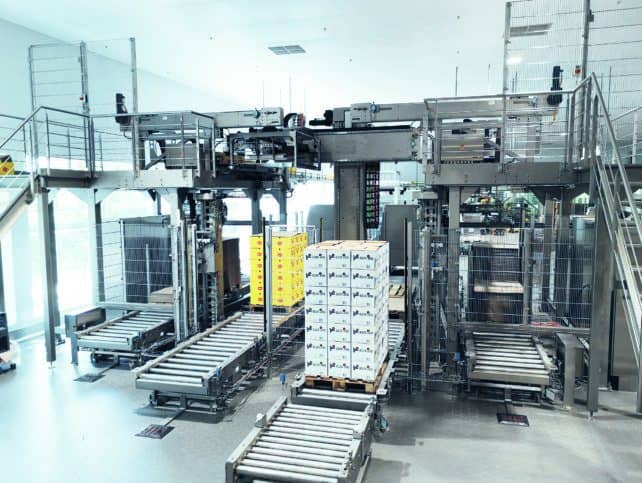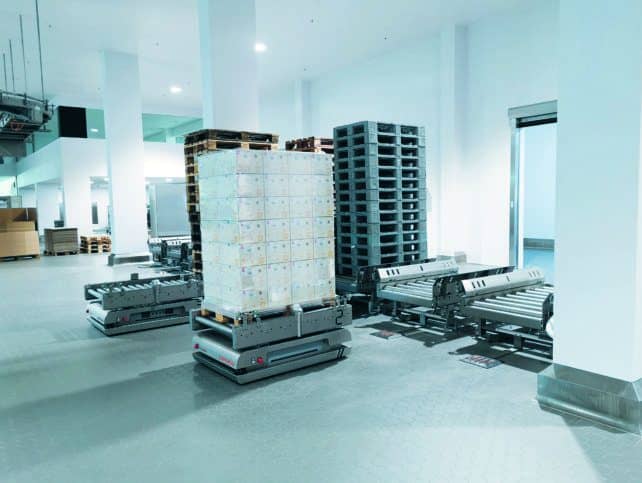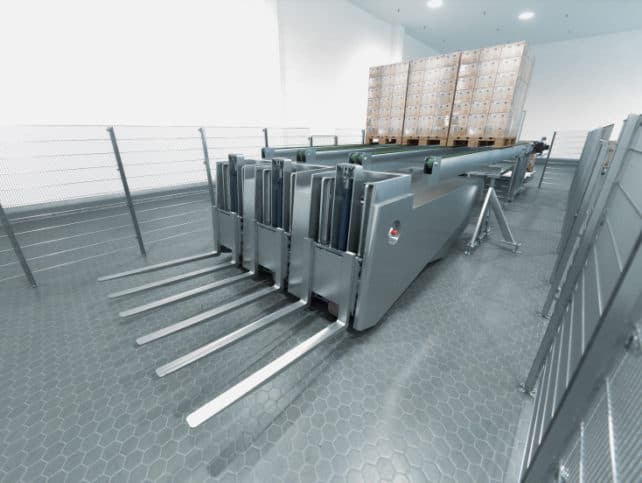TRAPO expertise: complete system competence for production in high-care areas
In food production, the highest hygiene standards are essential – TRAPO GmbH offers these standards along the entire production line and in the downstream logistics – thanks to its own stainless steel production.
The decision was consciously made in favor of a partner that offers the highest level of safety and is demonstrably specialized in automation in the high-care sector.
- Gerhard Jerg | Geschäftsführer JERMI Käsewerk GmbHTask
Capacity bottlenecks at JERMI Käsewerk GmbH led to the planning of a completely new hall. Managing director Gerhard Jerg specifically looked for future technology – the overall line competence of TRAPO was convincing and not least the fresh, elegant, compact stainless steel design of the plant. Knowledge based on more than 50 years of experience and expertise in the field of stainless steel production. All components of the hygienic design are manufactured in the company’s own stainless steel production facility at its headquarters in Gescher-Hochmoor.
Requirements
- Hygiene design for cheese production
- Proven expertise in the high-care sector
- Automated intralogistics
- Special solution: the floor of the production hall should remain intactHygiene-Design für die Käseproduktion
Solution
TRAPO designed and installed a fully automated complete line for the intralogistics of JERMI Käsewerk GmbH.
Advantage: no interfaces, mechanically one structure, control-technically one system. Control via TIM, the TRAPO Intelligent Management System.
Two high-performance palletizers of the HLP series: The first variant with y-axis serves 2 palletizing stations, 2 infeed areas at the top, palletizing stations at the bottom. Second variant with traversing axis: The palletizer moves along a predefined length and palletizes goods from 5 independently running infeeds, sorted by type, to 5 assigned palletizing stations.
A fleet of 6 TTS series automated guided vehicles takes over the onward transport of the cheese variations packed on pallets to the TRAPO Stretch Wrapper (TSW series), to the warehouse and to the loading station.
TIM® controls, selects free shuttles and sends them on the shortest or fastest route.
JERMI decided in favor of mobile conveyor technology in order to be able to use the existing hall space flexibly and depending on the product. Basically, the automated guided vehicles can be configured according to a modular principle: different versions, payloads, speeds and superstructures such as MRK robots, lift, etc.
Following palletizing, automated guided vehicles of the TTS series take over the transport to the stretch wrapper. The secured load is handled by a fleet of AGVs consisting of several vehicles – to the warehouse or directly for loading.
loading. The operating battery of the AGVs is charged via contacts.
TRAPO Transport Shuttle (TTS series) and TRAPO Warehouse Shuttle (TWS series) are used in combination: for precise, time-saving transfers and optimal use of warehouse space. Here, the TWS travels three meters per second at an acceleration of 1.5 m/s2 and completes the cycle of extending, gripping and retracting in three seconds or less.’ The TRAPO Loading System TLS 3600 completes the seamless automation – right into the truck.
The TLS automatically compensates for height differences at the loading ramp and corrects its position.
Loading takes place in 3 steps. First, up to 3 pallets are placed next to each other in a row on the stationary part of the system and aligned.
This is followed by picking up and loading the row. During the loading process, another row of pallets is formed and provided on the stationary part.
This is a continuous process that saves time and distance and avoids waiting times during pallet loading.
For a 13-meter trailer, the loading time with 33 pallets – depending on the load – is about 15 minutes.
Usually, the traversing unit of the TRAPO Loading System (TLS series) operates on rails to serve several loading stations. At JERMI, a special solution was required because the hall floor had to remain intact. A 20-ton driverless transport system was developed for efficient movement of the loading system, which in this way – driving autonomously – can serve several loading units.


